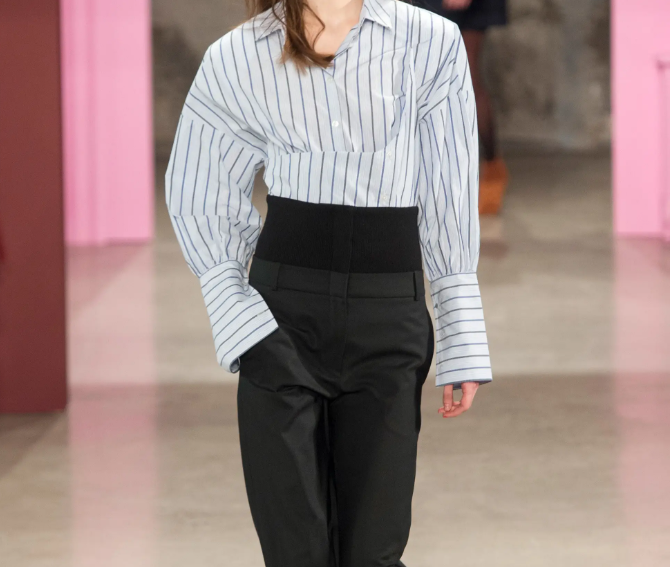
Thanks to the popularity of Harry Styles and brands like Christian Dior, Chopova Lowena and Bode, patchwork has a homely touch that's just what we need right now
Almost a year ago, Harry Styles wore a stylish JW Anderson cardigan with a bright, playful color block to rehearsals for The Today Show in February 2020.
On Ms Styles, its sleek, comfy look struck just the right balance between schoolteacher, 1970s blanket and Elmer, a tamer tartan elephant. For a singer who has always loved gorgeous knitwear, everything is normal at the moment.
Then, a few months later, something unexpected happened. The cardigan suddenly burst into red. One fan created her own version and shared her results on TikTok. Others quickly followed suit, and soon the shirt was ubiquitous: the hashtag #HarryStylesCardigan was viewed more than 40 million times. The response was so overwhelming that designer Jonathan Anderson released the original designs to the knitter community, saying he was "overwhelmed and overwhelmed" by the response to the patchwork piece.
There is something about this timeline that now feels particularly evocative of the year just ended. In the first half of 2020 - when the lockdown still felt like a strange novelty, fueled by optimism that things would soon return to normal - banana bread was all the rage, and handmade textile projects seemed just the symbol of a temporarily inhouse-bound world.
The V&A agrees - they acquired the JW Anderson cardigan in November as part of their permanent collection - and points out how it highlights and proves "the power of creativity and social media to bring people together in the face of extreme adversity."
It could also be said that it was born at the right time, just in time for the patchwork in the fashion industry more and more firmly established a year. First up is Alexander McQueen's Autumn/Winter 2020 collection, inspired by Welsh quilting and carpet making.
Elsewhere, Miu Miu's Pre-Fall 2020 collection was girly, full of Peter Pan crewnecks and hippie-inspired patchwork dresses, perfect for the final autumn season in September.
When it came to early fall, when brands presented their spring/Summer 2021 collections - and designers were able to make the most of this new era defined by the pandemic - patchwork designs were everywhere, from Duro Olowu to Christian Dior.
For its part, Preen appealed to the shut-down experience of the design duo, who told Vogue that their decision to use a patchwork of unsalable fabrics was partly due to production issues and partly to cope with the time they spent with their children during the design process: "We initially gave them some textile scraps to keep them busy after they had studied at home. We also gave them a small household sewing machine... And it just kind of flowed from there."
The result - impossible textures and colors are cobbled together, and pieces of scrap fabric are trimmed with gold to mimic ceramic shards that have been restored following the Kintsugi process - is both thoughtful and imaginative.
A similar sense of finesse inspired by the lockdown can be seen at Marni, where creative director Francesco Risso has updated 25 coats from previous collections, building on last season's playful patchwork.
Describing them as "unique pieces, all pieced together and hand-painted with verses I've collected with my community since the lockdown," he relished the lightness and symbolic "vulnerability" inherent in disassembling and reassembling the garments.
When it comes to quilting, it seems impossible to avoid talking about the overall meaning of the past year: whether it's the craft symbolizing a more interesting way of making clothes, the good intentions of salvaging old fabrics, or a means of reinvigorating a bygone era.
Quilting implies a sense of orderliness and a reverence for the usefulness of waste materials. Patchwork can also be a rejection of conventional fashion systems, as designers such as Richard Malone recycle leather scraps to create limited-edition pieces that don't care about the season or the calendar.
Patchwork also presents a gender-specific view of the craft, with a host of new brands, including Chopova Lowena, Sea and Bode, paying tribute to the seamstresses, embroiderers, quilt and tapestry makers of the past.
After all, weaving used to be considered a chore, while sewing and mending around the house was traditionally a task undertaken by women.
With many of those spring and summer collections about to go on sale, the desire for quilts shows no signs of abating. Perhaps behind this kind of impulse is a feeling of longing for comfort and disclosure.
As the book observes, "Sewing is a way of marking our existence on cloth: drawing patterns of our place in the world....... And leave indelible evidence of ourselves in the stitches."
This sense of touch and place may be just right for the moment. What's happening right now may be hard to grasp, but there's something strangely comforting about a garment that shows us how to put the pieces together.

